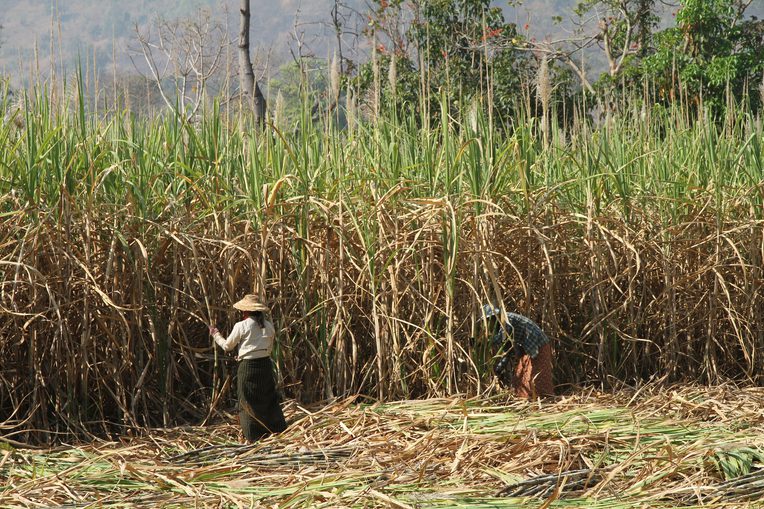Heat
From the Series: Lexicon for an Anthropocene Yet Unseen
From the Series: Lexicon for an Anthropocene Yet Unseen

We used to call it “global warming.” Behind the Anthropocene, we are told, is a gathering heat. Perhaps it emanates from the birth of internal combustion. Perhaps it is as old as cooking, hunting, and gardening.
Identifying a material prime mover for the rising heat is one of many challenges for anthropology in the Anthropocene, but I must admit that I’m prone to thinking with heat as a metaphor. In a variety of medical systems—including Western biomedicine—body temperature, both perceived and measured, plays a central role in diagnosis. Bringing this metaphorical heat to debates over the health of the planet invites appeals to another metaphor: Gaia. Contemplating the Anthropocene, some of us imagine an overheated, weary Mother in the throes of Her last days.
Yet Gaia seems too big a figure to think with—too deceptively unifying. Heat is everywhere, but it is also profoundly differential.
Consider the story of Jorge and Ulises Pacheco, brothers and former sugarcane cutters. Both of them live in the town of Chichigalpa, in northwest Nicaragua, and both have been diagnosed with chronic kidney disease of nontraditional causes (CKDnt). After years of cutting and burning cane, they are among thousands of Central Americans whose kidneys are slowly failing. They do not have diabetes. They do not have hypertension. Still, they and their neighbors are dying as their creatinine levels rise uncontrollably.

In a sense, work in the cane has always been deadly, but CKDnt is a new disease. Jorge and Ulises initially suspected that the thousands of cases that appeared among their coworkers during the 1990s might be related to the increased used of pesticides. Fearing that they were being poisoned by exploitative employers, they and their fellow workers successfully organized themselves and, by 2005, they had convinced the World Bank to fund research on CKDnt. They did this despite vigorous resistance from the Nicaraguan government and from Nicaragua’s largest sugar mill, Ingenio San Antonio, owned by the Pellas Group, the country’s most powerful corporation.
Since 2005, research has turned up little to no evidence of a link between pesticides and CKDnt. Studies have, however, revealed strong links between the disease and heat exposure. It is possible that the kidneys of sugarcane cutters are responding to some kind of thermal tipping point. As a Colorado-based team of investigators has suggested, conditions in the cane may have gotten just slightly worse—just hot enough—to spark a new pathology. Temperatures in El Salvador, less than one hundred miles north of Chichigalpa, have risen by 0.5°C since 1980. These same studies indicate that work in the cane has also gotten more intense. Hours are longer and breaks for water, rest, and shade are less frequent. The heat that has always been there—as potential energy in sugar and carbon, as pounding sunlight, as surplus labor—is taking on a new embodied form.
The heat that has long driven the global economy might be its undoing. Consultants at Verisk Maplecroft have warned that rising temperatures could cut productivity in Southeast Asia by as much as 25 percent over the next thirty years. States, insurance companies, and labor unions from California to Texas are rewriting occupational health rules to deal with the threat of heat stress. Nor are laborers and managers the only ones feeling the burn. As Jason de León (2015, 32) has shown in unsparing ethnographic and forensic detail, the superheated environment of the Sonoran desert has been harnessed as a weapon by the U.S. Border Patrol: a “natural” deterrent to undocumented migration. Desert heat not only kills would-be migrants; it incinerates their bodies and makes them disappear.
Heat’s effects, incidentally, aren’t all bodily. Back in Chichigalpa, Jorge and Ulises both believe that heat is to blame for their condition, but they are divided over what to do about it. Ulises leads an organization of CKDnt sufferers who want to work with the Pellas Group to secure payments and medical care for former cane cutters. Jorge leads a group that opposes working with a plantation company and a government that have ignored laborers for more than a scorching century. This struggle between two dying brothers is a struggle over how to make justice out of heat. Jorge and Ulises are no longer on speaking terms.
The kidney has long been a site of familial care and concern. Brothers and sisters accompany one another during long sessions of dialysis, and close kin can be among the most suitable kidney donors. In Chichigalpa, however, heat is rending these socio-organic ties asunder, even as the disease that affects Jorge and Ulises spreads around the world and links them to farmers in Egypt and Sri Lanka. CKDnt appears to be a problem of both global health and global warming. Yet body and Earth don’t map as neatly onto one another as they might in a Gaia story.
The situation I have described is emblematic of what Kim Fortun (2012) calls “late industrialism.” Heat is both evenly distributed and patchy. Some bodies—not all—are deteriorating, but we are supposed to imagine an entire biosphere in peril. Is the heat that causes coral reef die-offs the same heat that causes CKDnt, or the same heat that causes the bodies of migrants to decompose and dissipate after they perish in the desert?
Instead of teetering between extinction and survival, perhaps we humans are instead catching a glimpse of a new thermal necropolitics (Mbembe 2003), in which heat kills not globally, but selectively. Ethnography, then, can break down the metaphorical and social forms of insulation that make heat seem sometimes global, sometimes invisible. It can help us find patterns and points of pushback within what look like random flare-ups, combustions, and burns.
De León, Jason. 2015. The Land of Open Graves: Living and Dying on the Migrant Trail. Berkeley: University of California Press.
Fortun, Kim. 2012. “Ethnography in Late Industrialism.” Cultural Anthropology 27, no. 3: 446–64.
Mbembe, Achille. 2003. “Necropolitics.” Translated by Libby Meintjes. Public Culture 15, no. 1: 11–40.